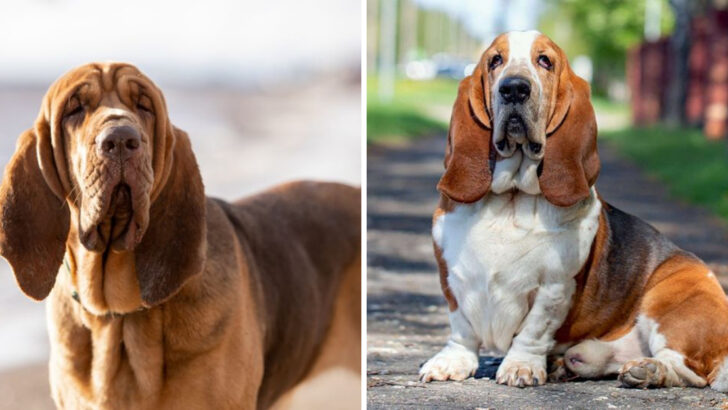You’d never mix up a lion and a housecat—so why do people keep confusing Bloodhounds and Basset Hounds?
Sure, they’ve both got floppy ears and soulful eyes.
But that’s like saying a race car and a tricycle are the same because they both have wheels.
One is built for long-haul tracking missions, nose to the ground like a scent-fueled detective.
The other waddles in with stubby legs and a whole lot of charm, making everyone fall in love before it even barks.
These two hounds might share some DNA, but their personalities, builds, and even their snoring styles are worlds apart.
Once you know the differences, you’ll never mix them up again—and you’ll probably fall a little harder for both.
Ready to meet the sniffing sleuth and the squat snuggler?
Let’s break it down.
Distinct Ears
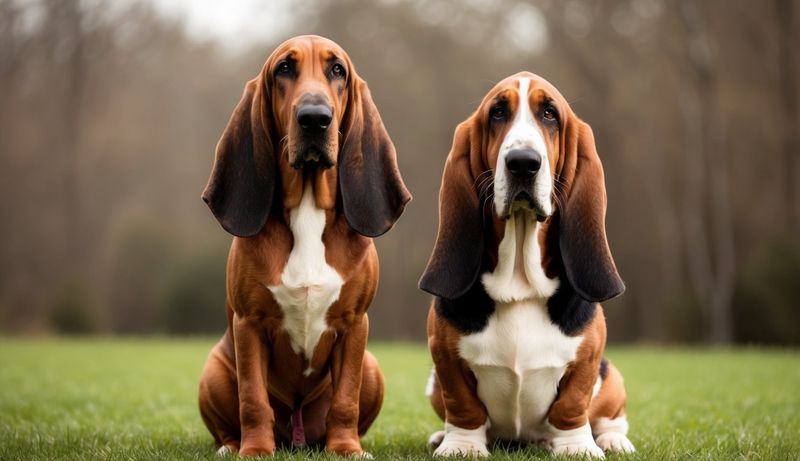
With ears drooping almost to the ground, the Bloodhound’s auditory appendages are iconic. Their low-set ears not only add to their charm but serve a purpose by capturing scent particles, aiding their renowned tracking skills. On the other hand, the Basset Hound’s ears, while also long, are shorter and set lower on the head, giving them a different silhouette. This distinct ear setting is often one of the first indicators aficionados use to differentiate between the two breeds. Can you imagine a Bloodhound without its majestic ears? Hardly!
Size and Build
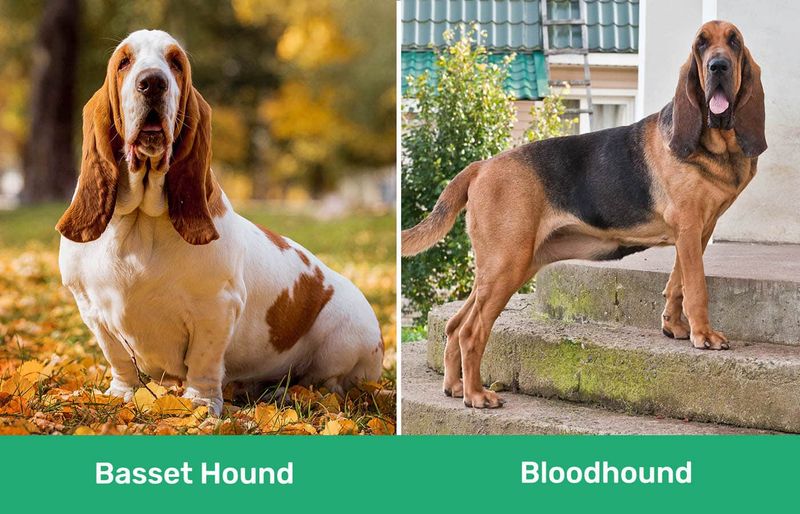
Towering over the Basset Hound, the Bloodhound is a giant among hounds. Their robust frame and taller stature contrast sharply with the Basset’s compact, stocky body. This size difference plays a significant role in the breeds’ utilities; Bloodhounds often cover more ground, whereas Bassets are more suited for closer quarters. Imagine walking a Bloodhound; you’d be prepared for a longer stride compared to the Basset’s leisurely pace. These differences are not just about appearances but also reflect the breeds’ historical functions.
Fur Texture
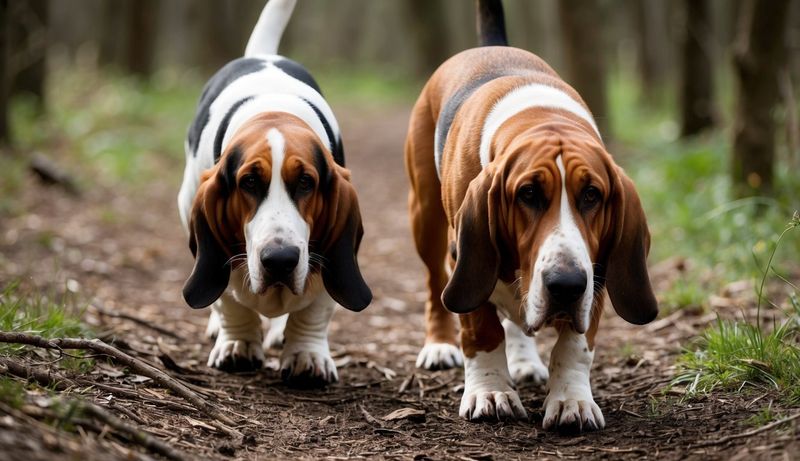
The Bloodhound’s coat is characteristically loose and smooth, flowing over its muscular frame. This loose skin is part of their appeal, enhancing their expressive eyes and gentle demeanor. In contrast, Basset Hounds have dense, short fur that sits snugly against their stocky bodies. This difference in fur texture not only affects grooming routines but also adds to their unique physical appearance. Imagine running your hand over a Bloodhound’s loose folds versus the sleekness of a Basset; the tactile contrast is as pronounced as their visual one.
History and Origins
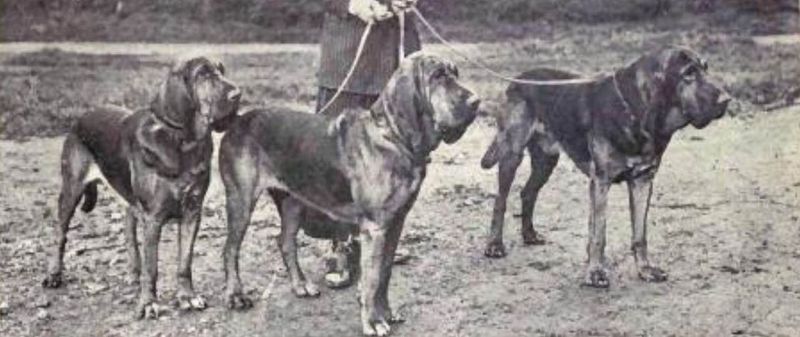
Bloodhounds boast a storied past, with roots tracing back to medieval Europe where they were prized for their exceptional scenting abilities. Basset Hounds, meanwhile, emerged in 19th century France, bred for their prowess in tracking small game. This historical divergence not only shaped their physical characteristics but also their roles in hunting and companionship. Envision the grand halls of royalty where Bloodhounds were revered, versus the rustic French countryside where Bassets were cherished. These histories are not just tales, but foundational elements of their identities.
Temperament
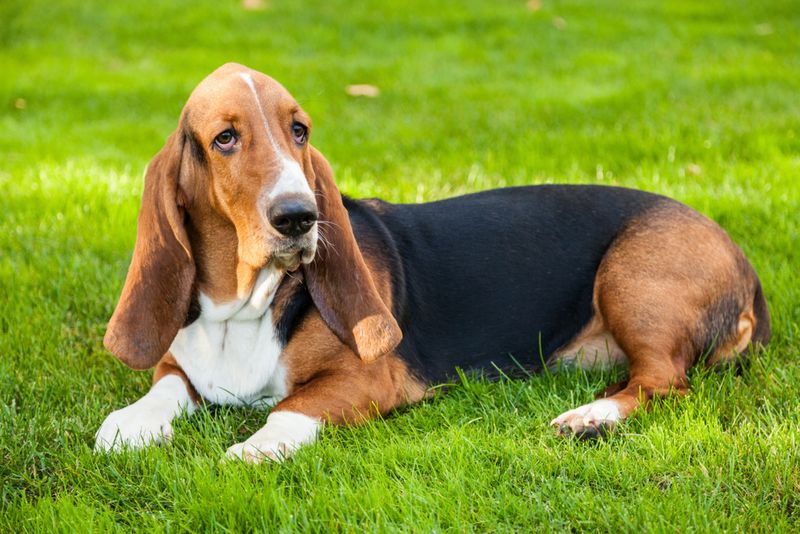
Gentle giants, Bloodhounds are known for their patient and kind nature. This calm demeanor makes them excellent companions for families and individuals alike. In contrast, Basset Hounds often display a playful curiosity, their wagging tails and eager noses always ready for an adventure. This variance in temperament is more than skin deep; it influences their training, interactions, and overall lifestyle. Picture a Bloodhound lounging peacefully versus a Basset on an enthusiastic sniffing mission. Each has its charm, but their personalities clearly set them apart.
Vocalization
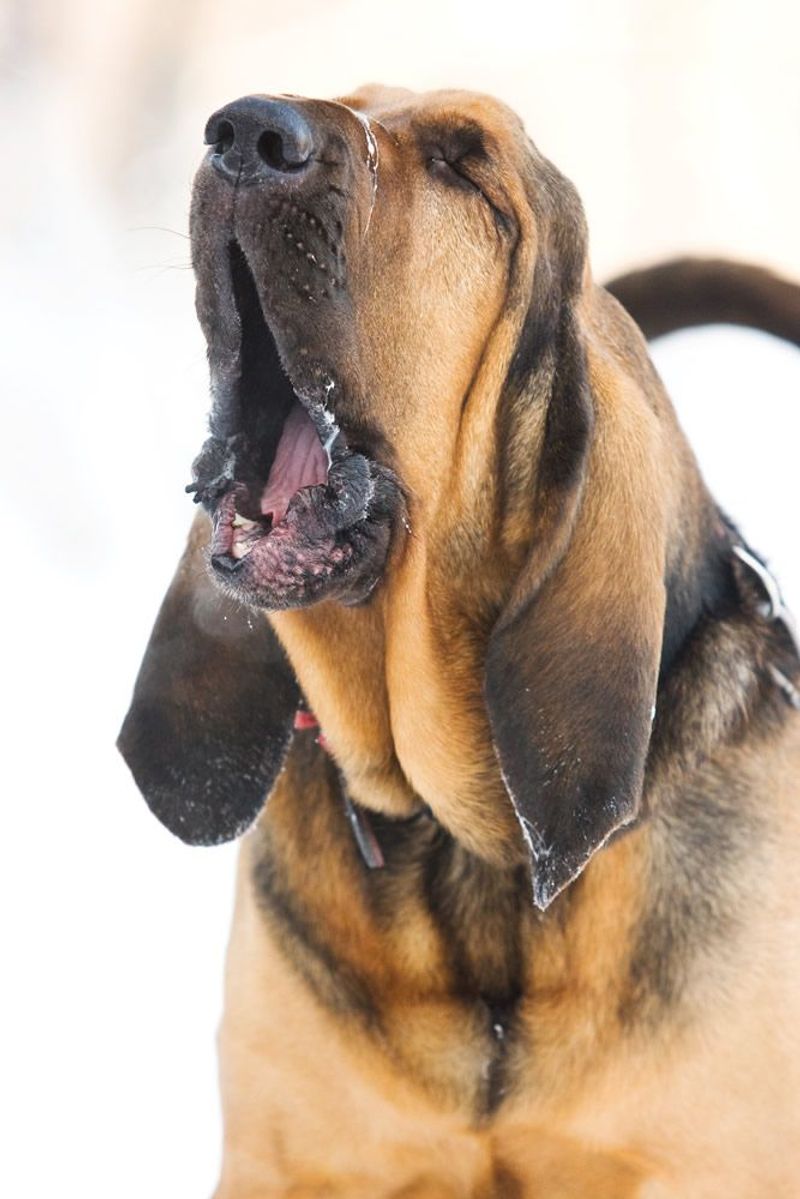
Known for their deep, resonant howls, Bloodhounds can fill a valley with their voice. This vocal prowess is part of their tracking heritage, signaling their progress during a hunt. Basset Hounds, while also vocally expressive, tend to bark rather than howl, their sounds often described as baying. This difference in vocalization reflects not just their hunting roles but also their communication styles. Imagine the echo of a Bloodhound’s howl versus the playful bark of a Basset; both captivating, yet unmistakably different.
Exercise Needs
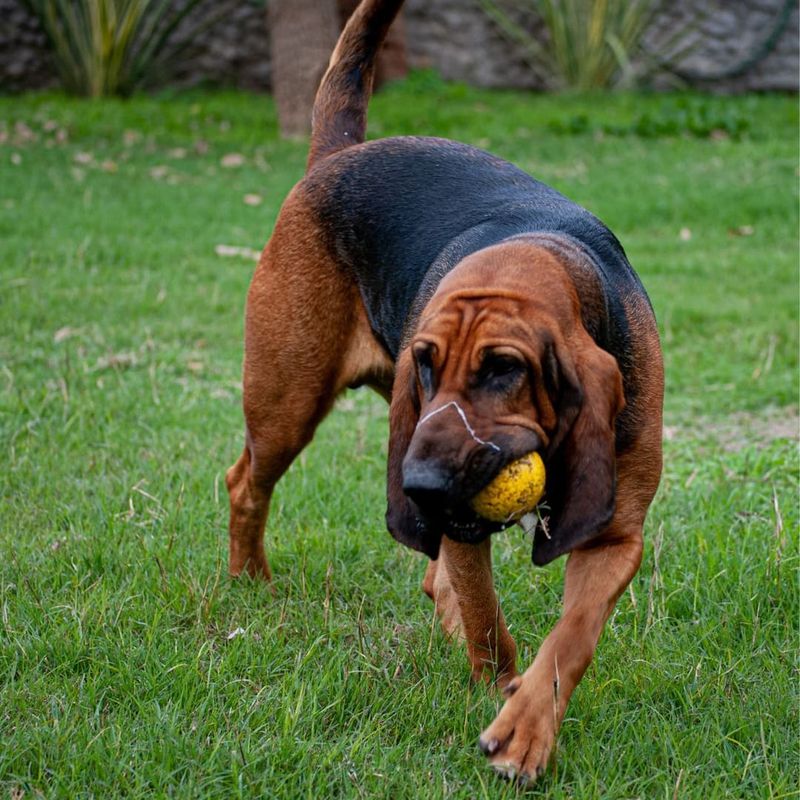
Bloodhounds, with boundless energy, require extensive exercise to stay healthy and content. Their keen noses often lead them on long, enthusiastic trails. Basset Hounds, however, are more laid-back, preferring leisurely strolls rather than vigorous activity. This contrast in energy levels influences their suitability for different owners; a Bloodhound might thrive with an active family, while a Basset fits well in a more relaxed environment. Visualize a Bloodhound sprinting through a forest versus a Basset leisurely sniffing around a park; their exercise needs shape their lifestyles.
Health Considerations
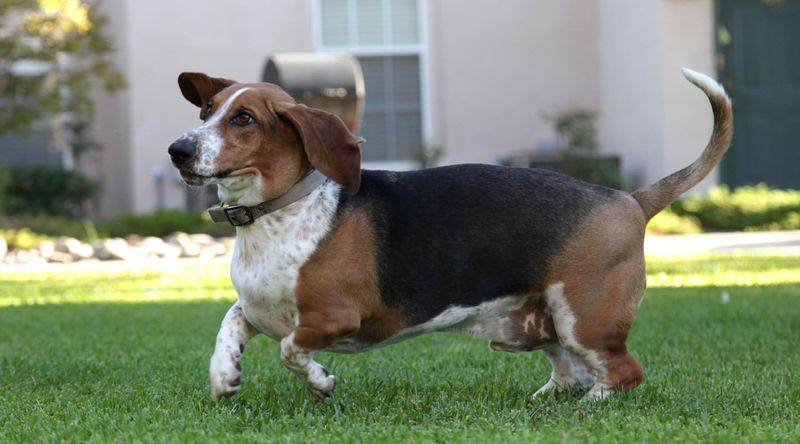
Both breeds come with unique health considerations. Bloodhounds are prone to ear infections due to their long, droopy ears, requiring regular cleaning. Basset Hounds, on the other hand, often face joint issues, given their short legs and heavy bodies. These health factors are crucial for potential owners to consider, as they impact the dogs’ quality of life and care routines. Imagine a vet gently checking a Bloodhound’s ears versus examining a Basset’s joints; such care nuances are essential to their well-being.
Socialization Needs
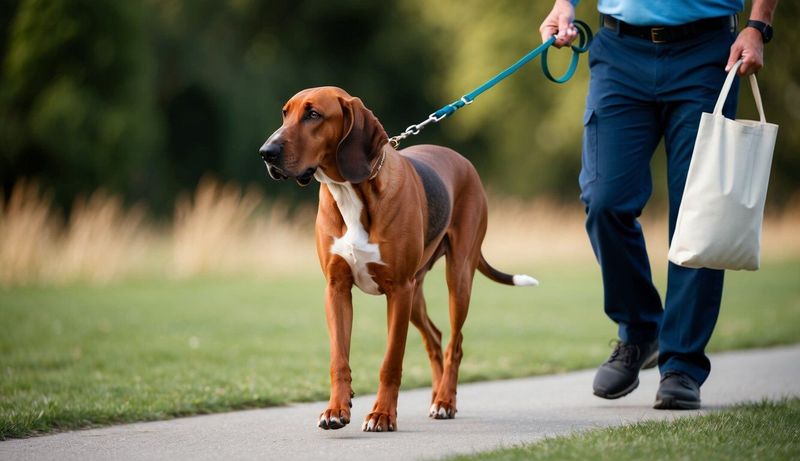
Bloodhounds are naturally gentle and thrive on human interaction, making them excellent family dogs. Their patient nature means they often get along well with children and adults alike. Basset Hounds, while social, often display a more independent streak, frequently seeking out the company of other dogs. This difference in social dynamics affects their integration into households and communities. Picture a Bloodhound quietly engaging with family members versus a Basset mingling with fellow canines; their social preferences are as distinct as their appearances.
Scenting Abilities
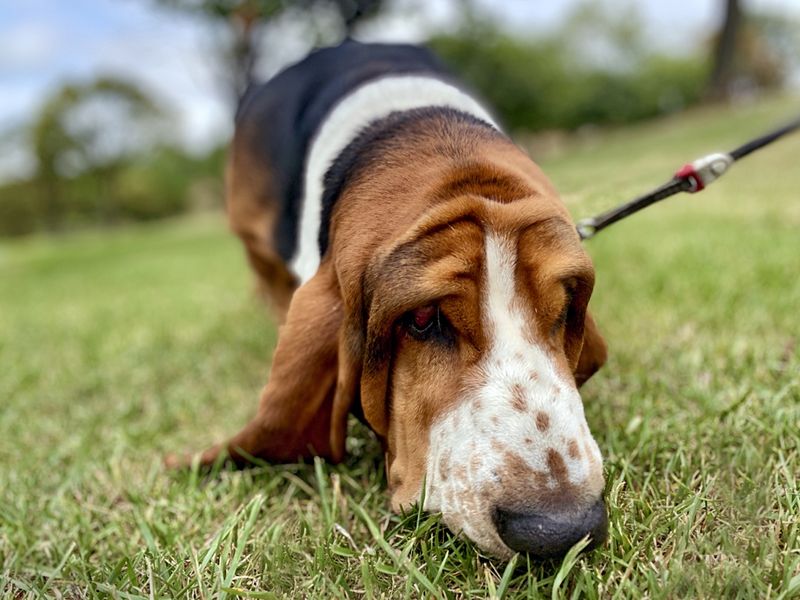
Famed for their unparalleled scenting abilities, Bloodhounds are often used in search and rescue operations. Their olfactory prowess is legendary, capable of following trails over long distances and past significant time lapses. Basset Hounds, while also skilled scent trackers, tend to work at a more leisurely pace, suited for tracking small game. This distinction in scenting capabilities highlights their roles and environments. Envision a Bloodhound on an intense search mission versus a Basset casually sniffing in a garden; their noses lead them on diverse adventures.
Facial Expressions
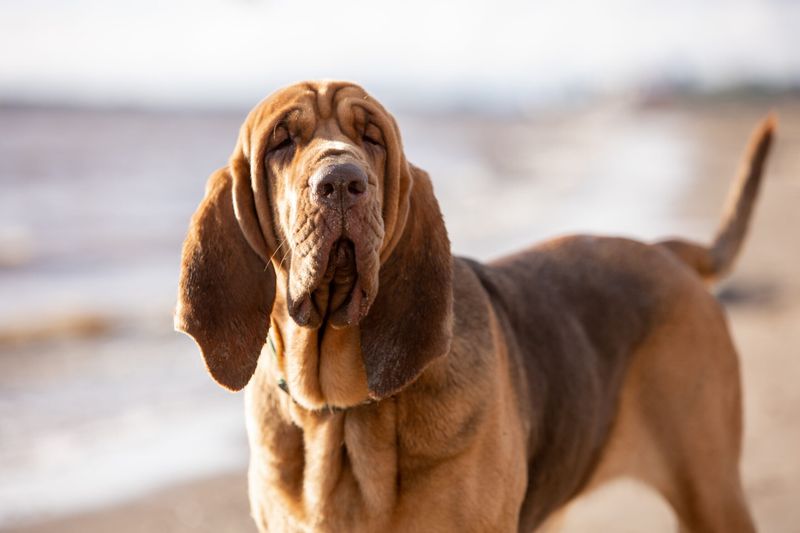
Bloodhounds possess a characteristic mournful expression, their droopy eyes and jowls exuding a sense of wisdom and empathy. This soulful gaze makes them appear thoughtful, even contemplative. Basset Hounds, contrastingly, often sport a more curious and playful look, with bright eyes that seem to ask endless questions. These facial expressions not only endear them to owners but also play roles in their communication. Picture the sagacious eyes of a Bloodhound versus the inquisitive eyes of a Basset; their expressions tell stories beyond words.
Grooming Needs

Grooming a Bloodhound involves regular cleanings to maintain their loose skin’s health and prevent infections. Their coat, while smooth, benefits from routine brushing. Basset Hounds require attention to their dense fur and nails, which should be trimmed regularly due to their weight and activity levels. These distinct grooming needs mean owners must be prepared for different routines. Imagine the rhythmic brushing of a Bloodhound’s folds versus the careful nail-trimming of a Basset; these routines are as tailored as the dogs themselves.
Role in Popular Culture
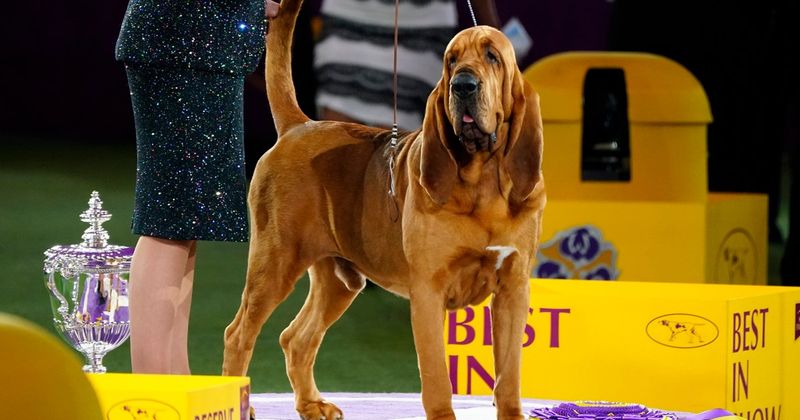
Bloodhounds often feature in detective stories, their scenting skills making them iconic sleuths. Their role in tracking and finding lost individuals has cemented their place in popular culture as symbols of determination and loyalty. Basset Hounds, with their endearing looks and playful nature, frequently appear in family films, captivating audiences with their charm. This cultural presence reflects their differing public images. Imagine a Bloodhound on the trail in a mystery novel versus a Basset bringing laughter in a comedy; their cultural roles are as distinct as their histories.

